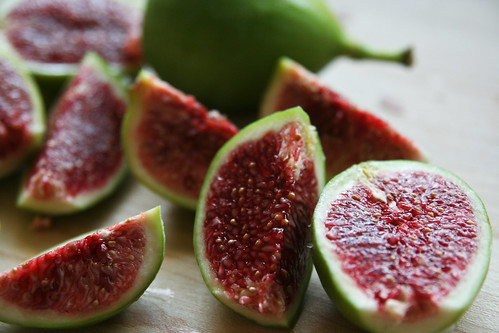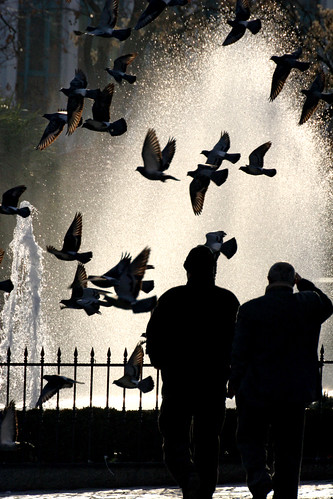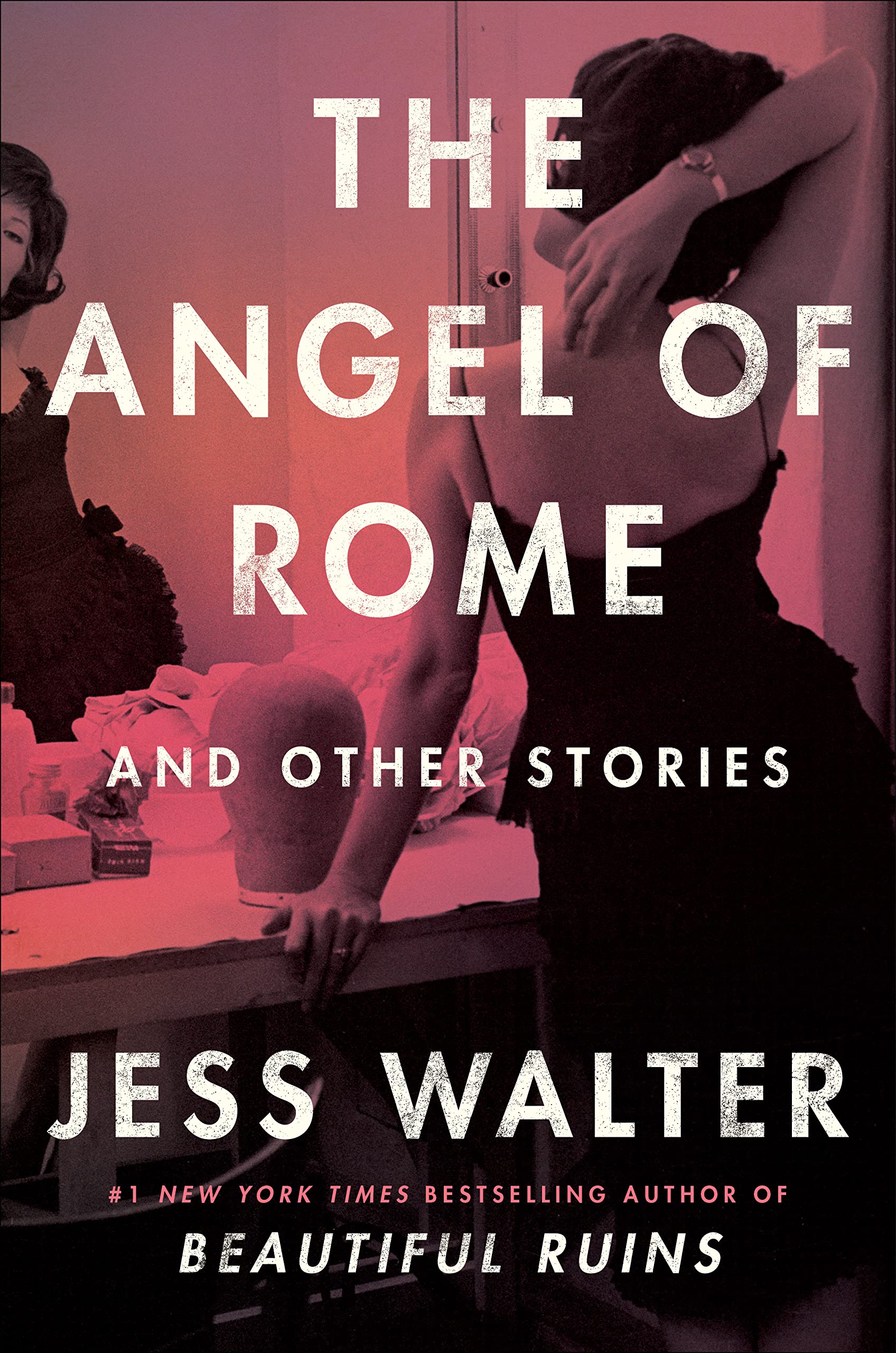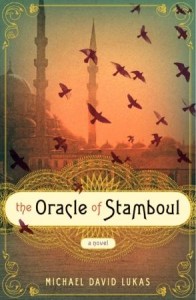 For those privileged to experience a true winter, early March can drag. Bundling up has lost its novelty, the lack of green in the landscape tires the eye, even the mounds of snow on the sidewalk look gray, crumbly, dispirited. Enter: sun-drenched marble, the heat and clamor of the bazaar, the scent of fresh figs, dates and a warm, salt breeze off the Sea of Marmara. Reading Michael David Lukas’s debut novel, The Oracle of Stamboul (Harper), feels like the antidote to winter malaise – a true adventure story, set in Stamboul (modern Istanboul) at the dramatic end of the 19th century, which features a heroine as precocious as she is brilliant.
For those privileged to experience a true winter, early March can drag. Bundling up has lost its novelty, the lack of green in the landscape tires the eye, even the mounds of snow on the sidewalk look gray, crumbly, dispirited. Enter: sun-drenched marble, the heat and clamor of the bazaar, the scent of fresh figs, dates and a warm, salt breeze off the Sea of Marmara. Reading Michael David Lukas’s debut novel, The Oracle of Stamboul (Harper), feels like the antidote to winter malaise – a true adventure story, set in Stamboul (modern Istanboul) at the dramatic end of the 19th century, which features a heroine as precocious as she is brilliant.
In Eleonora Cohen, Lukas has created a winsome companion – a prodigy, no less – to guide the reader through teeming Stamboul. A flock of hoopoes and a pair of Tartar midwives mysteriously appear to attend Eleonora’s birth, an affair that leaves the young girl motherless. Soon her aunt Ruxandra appears and assumes a detached version of maternal duties, at which point one begins to realize that the
girl has special powers – intellectual, if not otherwise. At eight years old, Eleonora stows away in the hold of the ship. Her father Yakob, a Jewish carpet dealer, is aboard that ship, sailing from their home in Constanta on the Black Sea coast to Stamboul to sell some carpets. All this creates the set-up and expectation of adventure and heroic encounters, but Lukas places at least as much weight on the particular time, place and households of his principal characters as he does on swashbuckling or grand deeds. A large part of the delight of The Oracle of Stamboul comes from the way Lukas meticulously describes first Constanta and then Samboul.
It’s rare to read a debut novel so steeped in a sense of the past. Lukas excels in the rich details of the marketplace or the lordly house. When Eleonora and her father arrive in Stamboul, they stay at the lavish home of Yakob’s old friend and business partner Moncef Bey. The Bey, as he is called, takes Eleonora on a shopping excursion for a bewitching new wardrobe. The dressmaker’s shop, like all else in the story, posseses a heightened sensuality. Even spoken language rises. When the Bey croons, “A young lady without a beautiful dress is like a swan without feathers,” the reader along with Eleonora feels a quickening. Just listen to how Lukas describes the change in seasons:
Summer slipped into Stamboul under the cover of a midday shower. It took up residence near the foundations of the Galata Bridge and drifted through the city like a stray dog. Ducking in and out of alleyways, the new season made itself felt in the tenacity of fruit flies buzzing around a pyramid of figs, in the increasingly confident tone of the muezzin, and the growing petulance of shopkeepers in the produce market. Summer could be found in the sticky smell of cherry sherbet, in roast squab, and in rotting loquats.
This lush prose carries into the second strand of the story, that of Sultan Abdulhamid II. A looming political disaster for the Ottoman Empire provides much of the story’s tension, but even domestic details provide a glimpse of that world of 1885. Take the description of how the Sultan, driven by state concerns and distracting hunger, breaks Ramadan:
He was on the verge of eating the bread with sardines when he discovered, at the very back of the larder, a box of baklava. Glistening with syrup, the pastries were dusted with bright green ground pistachios. His mother had a penchant for sweets. It would be no surprise if she had hidden the box specifically for consumption during Ramadan.
See how Lukas reveals the mother’s character even as he describes a small act by the son? The beautiful language gives the novel not just a fit setting for Eleonora and the Sultan’s intersecting stories, but links the book to older forms of the novel – the Victorian Novel, particularly.
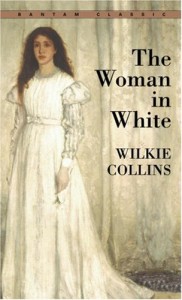 The Oracle of Stamboul feels rooted in 19th Century literature. From characterization, to the time spent setting the scene at the beginning of a chapter, to the concern with a noble class different from our current notion of the merely “rich,” the book echoes its contemporaries – its 19th Century contemporaries. Many books are mentioned – Tristam Shandy, The Hourglass, Sultan Abdulhamid even enjoys Wilkie Collins’s The Woman in White, which he calls “an English mystery novel.” Eleonora’s fastidiousness recalls a young Dorothea Brooke from Middlemarch – which would have been published the decade before Lukas’ story transpires. The effect is elegant, transporting:
The Oracle of Stamboul feels rooted in 19th Century literature. From characterization, to the time spent setting the scene at the beginning of a chapter, to the concern with a noble class different from our current notion of the merely “rich,” the book echoes its contemporaries – its 19th Century contemporaries. Many books are mentioned – Tristam Shandy, The Hourglass, Sultan Abdulhamid even enjoys Wilkie Collins’s The Woman in White, which he calls “an English mystery novel.” Eleonora’s fastidiousness recalls a young Dorothea Brooke from Middlemarch – which would have been published the decade before Lukas’ story transpires. The effect is elegant, transporting:
The sky was a bottomless silky black, sprinkled with stars like spilled sugar and quiet but for a few lonely stray cats prowling the waterfront. A loose association of ships slipped through the straits and the moon was pregnant with reflected glow.
One can almost hear Ms. Eliot describing the nighttime heavens in those terms. All the above to describe insomnia! Even the domestic feels sweeping, somehow grand and at an exalted remove, like a dreamy fairy tale.
Unusual diction heightens the effect. There are those ever-present hoopoes to begin with, Eleonora walks “past pashas and janissaries gliding silent as snakes through water”; the horses pulling the palace carriage have “skin gleaming with the dull radiance of meerschaum.” Perhaps this merely reveals my own linguistic shortcomings, but I have trouble remembering the last contemporary book I read that used words of the janissaire, meerschaum, or hoopoe variety. They feel very much of a time and place, one distant from our own. This formality lends the book a patina of history, at least hinting at an author steeped in writers like Joseph Conrad, E.M. Forster, and Hermann Broch.
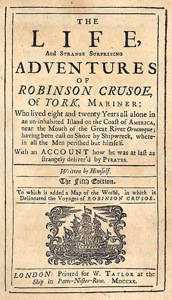 Reading plays a thematic, as well as historical, role in Eleonora’s story. Before leaving Constanta, she becomes obsessed with The Hourglass, a six-volume novel that begins with Lieutenant Brashov, a garrison and cobblestones. Pre-voyage, Eleonora must endure Ruxandra’s rationing of her reading – her aunt worrying that it is unseemly for so young a girl to tear through books at the pace Eleonora would wish. Yet, her niece already thinks of herself in literary terms, “Closing her eyes, she listened to the faint cooing of her flock and drifted off to thoughts of Robinson Crusoe, stranded alone on his desert island of despair. If she couldn’t finish her lessons, if she couldn’t finish the book, he would be stranded there in her mind forever.” In a brief hunt for the title, it seems The Hourglass is likely a creation of Lukas’ imagination – or has fallen even further out of the realm of popular literature. But the lengthy novel brings Eleonora and the Sultan together in an interesting way later in the story – reading is one of the joys they share. Once in Stamboul, much of the story’s action occurs in the Bey’s ornate library:
Reading plays a thematic, as well as historical, role in Eleonora’s story. Before leaving Constanta, she becomes obsessed with The Hourglass, a six-volume novel that begins with Lieutenant Brashov, a garrison and cobblestones. Pre-voyage, Eleonora must endure Ruxandra’s rationing of her reading – her aunt worrying that it is unseemly for so young a girl to tear through books at the pace Eleonora would wish. Yet, her niece already thinks of herself in literary terms, “Closing her eyes, she listened to the faint cooing of her flock and drifted off to thoughts of Robinson Crusoe, stranded alone on his desert island of despair. If she couldn’t finish her lessons, if she couldn’t finish the book, he would be stranded there in her mind forever.” In a brief hunt for the title, it seems The Hourglass is likely a creation of Lukas’ imagination – or has fallen even further out of the realm of popular literature. But the lengthy novel brings Eleonora and the Sultan together in an interesting way later in the story – reading is one of the joys they share. Once in Stamboul, much of the story’s action occurs in the Bey’s ornate library:
A dark, wood-paneled space decorated with antique globes and navigational instruments, the library was lined from floor to ceiling with books: philological treatises, geographies, encyclopedias, biographical dictionaries, poems, novels, and more than a few religious tracts, all bound in red, blue, green and brown morocco leather. Monsieur Karom served pistachio baklava and tulip-shaped glasses of black tea while the Bey set up a game of backgammon for Yakob and himself. Adorned with a sunburst of tiny cedar rhombuses, the Bey’s backgammon board was a masterwork of craftsmanship and elegance.
One of the girl’s new allowances in Stamboul is unlimited reading time and material, “What a joy it was to read in freedom, to fall into a book without the fear of Ruxandra peering over her shoulder.” This celebration of reading reminds you, the reader, of the pleasure of losing oneself in another world – an opportunity The Oracle of Stamboul provides.
This novel is also an unabashed celebration of birds. From the faithful flock of hoopoes that follow Eleonora from the day of her birth onward, to feathered metaphors throughout, Lukas fills the pages with the rustle of wings. Abdulhamid II takes an annual birding excursion to Lake Manyas (in the western part of modern Turkey).
Over the course of the trip, the Sultan saw more than fifty species of bird: white frosted geese, golden orioles, night herons, glossy ibises, a mass of spoonbills, and three pairs of bright orange-billed Dalmatian pelicans.
Even incidental mentions of birds congregate together. As Eleonora looks out her window at the Bey’s house: “On the other side of the glass, an unseasonably harsh wind blew off the water, lashing tree branches and tossing sea birds into somersaults.” The political turmoil of the Ottomans, Russians and Hapsburgs that hovers over the intimate details of the principal characters even finds an avian simile: “Meanwhile, France and Britain sat perched at the edge of the carnage, biding their time like crows on fence posts.” Besides providing continuity to the language, the presence of all these winged creatures lends a certain timelessness to the tale, even as it moves through very particular layers of the past.
Eleonora may play the role of heroine in this novel, but the true focal point of the book is Stamboul. Lukas succeeds in capturing a mood and a place, and all the attendant sensory experiences that allow a reader to truly disappear into a story. The elevated language – glorification such that even humble states feel gilded – achieves a part of this alchemy. But part of it must certainly land at the feet of his memorable characters – the fact that the adventure doesn’t end with a swashbuckling flourish seems somehow beside the point. Eleonora, Yakob, Moncef Bey, Sultan Abdulhamid – even the onerous Ruxandra – provide such good company, that even at the final page one feels as though another chapter of their story is just beginning. It seems fitting to end with Eleonora’s own sense of the magic of Stamboul, early in the novel, before other turns of fortune redirect her course. Here she contemplates her and Yakob’s looming departure from the city:
She knew all along that they would, at some point, have to leave the Bey and Stamboul and the routine she had so quickly become accustomed to, but knowing one has to leave is much different than being faced with an impending departure. At some point, everyone must leave this world, but who is ready to go?
Wise beyond her years indeed.


